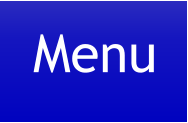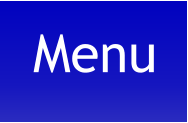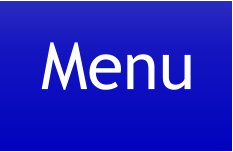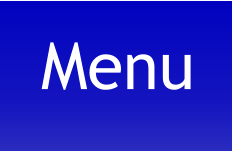SCHREIBER LAW OFFICE, LLC
ABOUT CHAPTER 13 BANKRUPTCY
If someone files a Chapter 13 bankruptcy and has secured debts like house or car payments, the payments on
these loans can be kept outside the Chapter 13 plan if desired.
A Chapter 13 bankruptcy works well for people who are behind on secured debts. Chapter 13 allows for the
deficiencies on these debts to be paid back at an affordable rate. The same theory applies to people who owe
money for child support and taxes. These debts can be paid over the course of up to 5 years through a Chapter
13, and government agencies such as the IRS and State of Minnesota are prevented from garnishing wages.
Repayment is on your terms, not theirs.
Chapter 13 is also an option for someone who does not qualify for Chapter 7 due to a high income.
In some situations Chapter 13 allows individuals to remove, or “strip off” the second mortgage on a home, if the
amount owed on the first mortgage is more than what the home is worth.
Chapter 13 bankruptcy is also an option for people who are not eligible for a chapter 7 bankruptcy, such as
individuals who have filed a previous chapter 7 in the last 8 years. Also, in an uncommon situation where a
person's property is not completely exempt in a chapter 7 bankruptcy, chapter 13 is a viable alternative.
Filing for bankruptcy (Chapter 7 or 13) automatically stops creditors from collecting debts. This is called the
"automatic stay." It means creditors must stop phone calls, letters, utility shut-offs, repossessions, foreclosures,
and any other demands for payment, immediately once the bankruptcy is filed.
The automatic stay is a very powerful tool. It extends to most lawsuits, so if a creditor is taking you to court, this
activity must stop immediately upon the filing of a bankruptcy petition. If a creditor is in the process of
garnishing wages or levying a bank account, this also must stop when a bankruptcy petition is filed.
A Chapter 13 reorganization bankruptcy is quite similar to a debt consolidation,
with the exception that the payment in a Chapter 13 is usually much lower than
the repayment in a non-bankruptcy consolidation. Also, creditors do not need to be
paid in full. You pay what you can afford to pay each month, and after the final
payment is made the remaining balances are eliminated. The length of a Chapter
13 plan ranges from 3 to 5 years. In a Chapter 13, individuals make a monthly
payment to the Chapter 13 Trustee, who in turn distributes the money to creditors.
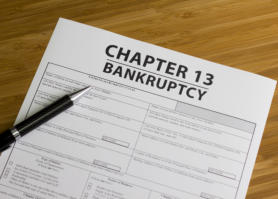
In a Chapter 7 bankruptcy, individuals are generally able to discharge their unsecured debts, which are debts without
collateral. When a debt is discharged, it is eliminated and does not need to be paid back. Common examples of
unsecured debts include credit cards, medical bills and personal loans. Secured debts such as a mortgage or car
payment must continue to be paid if the person desires to keep the property. Most, but not all debts, are discharged in
a Chapter 7 bankruptcy (see below).
There are income guidelines to qualify for Chapter 7 bankruptcy. The primary guideline to determine eligibility for
Chapter 7 is your income compared to the state's median income (the "means test"). Please see the FAQ section of
this web site for more information on the means test and Chapter 7 eligibility.
Understandably, many folks worry that they may lose their property if they file for bankruptcy. This is a common
myth. The bankruptcy code is written in a way to allow people who file for bankruptcy a fresh start from their debts
while being able to keep the property they already own. In fact, for the vast majority of bankruptcy cases filed no
assets are lost.
Not all debts are discharged in bankruptcy.
Common Debts that are Non-Dischargeable:
● Certain Debts Incurred Through a Divorce.
● Certain Taxes Owed to the IRS or State of Minnesota.
● Debts for Injury Caused While Driving Under the Influence of Alcohol.
● Debts for Spousal Maintenance and Child Support.
● Most Student Loans.
Also, if a substantial amount of purchases are made on a credit card right before a bankruptcy is filed, it is possible
that the creditor may bring an action to declare that credit card debt non-dischargeable on the basis of fraud.
ABOUT CHAPTER 7 BANKRUPTCY
MINNESOTA BANKRUPTCY LAW FIRM
(651) 554-0121
Schreiber Law Office, LLC
5878 Blackshire Path, Suite 8, Inver Grove Heights, MN 55076
1303 S. Frontage Road, Hastings, MN 55033
(651) 554-0121
We are a debt relief agency and help people file for relief under the Bankruptcy Code.
Privacy Policy
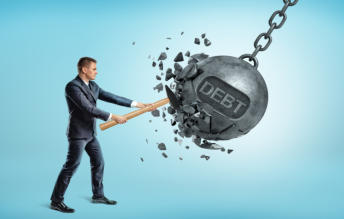


SCHREIBER LAW OFFICE, LLC


CHAPTER 7 vs CHAPTER 13
ABOUT CHAPTER 7
BANKRUPTCY
In a Chapter 7 bankruptcy,
individuals are generally able to
discharge their unsecured debts,
which are debts without collateral.
When a debt is discharged, it is
eliminated and does not need to be
paid back.
Common examples
of unsecured debts
include credit cards,
medical bills and
personal loans. Secured debts such
as a mortgage or car payment must
continue to be paid if the person
desires to keep the property. Most,
but not all debts, are discharged in a
Chapter 7 bankruptcy (see below).
There are income guidelines to
qualify for Chapter 7 bankruptcy.
The primary guideline to determine
eligibility for Chapter 7 is your
income compared to the state's
median income (the "means test").
Please see the FAQ section of this
web site for more information on
the means test and Chapter 7
eligibility.
Understandably, many folks worry
that they may lose their property if
they file for bankruptcy. This is a
common myth. The bankruptcy
code is written in a way to allow
people who file for bankruptcy a
fresh start from their debts while
being able to keep the property
they already own. In fact, for the
vast majority of bankruptcy cases
filed no assets are lost.
Not all debts are discharged in
bankruptcy.
Common Debts that are Non-
Dischargeable:
● Certain Debts Incurred Through a
Divorce.
● Certain Taxes Owed to the IRS or
State of Minnesota.
● Debts for Injury Caused While
Driving Under the Influence of
Alcohol.
● Debts for Spousal Maintenance and
Child Support.
● Most Student Loans.
Also, if a substantial amount of
purchases are made on a credit card
right before a bankruptcy is filed, it
is possible that the creditor may
bring an action to declare that
credit card debt non-dischargeable
on the basis of fraud.
ABOUT CHAPTER 13
BANKRUPTCY
A Chapter 13 reorganization
bankruptcy is quite similar to a debt
consolidation, with the exception
that the payment in a Chapter 13 is
usually much lower than the
repayment in a non-bankruptcy
consolidation. Also, creditors do not
need to be paid
in full. You pay
what you can
afford to pay each
month, and after the final payment
is made the remaining balances are
eliminated. The length of a Chapter
13 plan ranges from 3 to 5 years. In
a Chapter 13, individuals make a
monthly payment to the Chapter 13
Trustee, who in turn distributes the
money to creditors. If someone files
a Chapter 13 bankruptcy and has
secured debts like house or car
payments, the payments on these
loans can be kept outside the
Chapter 13 plan if desired.
If someone files a Chapter 13
bankruptcy and has secured debts
not in default, the payments on
these loans can be kept outside the
Chapter 13 plan if desired.
A Chapter 13 bankruptcy works well
for people who are behind on
secured debts. Chapter 13 allows for
the deficiencies on these debts to
be paid back at an affordable rate.
The same theory applies to people
who owe money for child support
and taxes. These debts can be paid
over the course of up to 5 years
through a Chapter 13, and
government agencies such as the IRS
and State of Minnesota are
prevented from garnishing wages.
Repayment is on your terms, not
theirs.
Chapter 13 is also
an option for
someone who does not qualify for
Chapter 7 due to a high income.
In some situations Chapter 13 allows
individuals to remove, or “strip off”
the second mortgage on a home, if
the amount owed on the first
mortgage is more than what the
home is worth.
Chapter 13 bankruptcy is also an
option for people who are not
eligible for a chapter 7 bankruptcy,
such as individuals who have filed a
previous chapter 7 in the last 8
years. Also, in an uncommon
situation where a person's property
is not completely exempt in a
chapter 7 bankruptcy, chapter 13 is
a viable alternative.
Filing for bankruptcy (Chapter 7 or
13) automatically stops creditors
from collecting debts. This is called
the "automatic stay." It means
creditors must stop phone calls,
letters, utility shut-offs,
repossessions, foreclosures, and any
other demands for payment,
immediately once the bankruptcy is
filed.
The automatic stay is a very
powerful tool. It extends to most
lawsuits, so if a creditor is taking
you to court, this activity must stop
immediately upon the filing of a
bankruptcy petition. If a creditor is
in the process of garnishing wages
or levying a bank account, this also
must stop when a bankruptcy
petition is filed.
Schreiber Law Office, LLC
5878 Blackshire Path, Suite 8, Inver Grove Heights, MN
1303 S. Frontage Road, Hastings, MN
(651) 554-0121
We are a debt relief agency and help people file for relief
under the Bankruptcy Code.
Privacy Policy
Bankruptcy Law Firm
(651) 554-0121

SCHREIBER LAW OFFICE, LLC
Bankruptcy Law Firm
(651) 554-0121
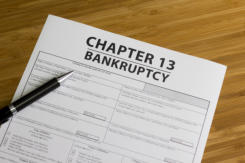
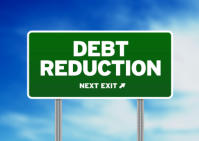
CHAPTER 7 vs CHAPTER 13
ABOUT CHAPTER 7 BANKRUPTCY
In a Chapter 7 bankruptcy, individuals are
generally able to discharge their unsecured debts,
which are debts without collateral. When a debt is
discharged, it is eliminated and does not need to
be paid back. Common
examples of unsecured debts
include credit cards, medical
bills and personal loans.
Secured debts such as a
mortgage or car payment must continue to be paid
if the person desires to keep the property. Most,
but not all debts, are discharged in a Chapter 7
bankruptcy (see below).
There are income guidelines to qualify for Chapter
7 bankruptcy. The primary guideline to determine
eligibility for Chapter 7 is your income compared
to the state's median income (the "means test").
Please see the FAQ section of this web site for
more information on the means test and Chapter 7
eligibility.
Understandably, many folks worry that they may
lose their property if they file for bankruptcy.
This is a common myth. The bankruptcy code is
written in a way to allow people who file for
bankruptcy a fresh start from their debts while
being able to keep the property they already own.
In fact, for the vast majority of bankruptcy cases
filed no assets are lost.
Not all debts are discharged in bankruptcy.
Common Debts that are Non-Dischargeable:
● Certain Debts Incurred Through a Divorce.
● Certain Taxes Owed to the IRS or State of
Minnesota.
● Debts for Injury Caused While Driving Under the
Influence of Alcohol.
● Debts for Spousal Maintenance and Child
Support.
● Most Student Loans.
Also, if a substantial amount of purchases are
made on a credit card right before a bankruptcy is
filed, it is possible that the creditor may bring an
action to declare that credit card debt non-
dischargeable on the basis of fraud.
ABOUT CHAPTER 13 BANKRUPTCY
A Chapter 13 reorganization bankruptcy is quite
similar to a debt consolidation, with the exception
that the payment in a Chapter 13 is usually much
lower than the repayment in a non-bankruptcy
consolidation. Also, creditors do not need to be
paid in full. You pay what you can afford to pay
each month, and after the
final payment is made the
remaining balances are
eliminated. The length of
a Chapter 13 plan ranges
from 3 to 5 years. In a Chapter 13, individuals
make a monthly payment to the Chapter 13
Trustee, who in turn distributes the money to
creditors. If someone files a Chapter 13
bankruptcy and has secured debts like house or
car payments, the payments on these loans can be
kept outside the Chapter 13 plan if desired.
If someone files a Chapter 13 bankruptcy and has
secured debts not in default, the payments on
these loans can be kept outside the Chapter 13
plan if desired.
A Chapter 13 bankruptcy works well for people
who are behind on secured debts. Chapter 13
allows for the deficiencies on these debts to be
paid back at an affordable rate. The same theory
applies to people who owe money for child
support and taxes. These debts can be paid over
the course of up to 5 years through a Chapter 13,
and government agencies such as the IRS and State
of Minnesota are prevented from garnishing wages.
Repayment is on your terms, not theirs.
Chapter 13 is also an option for
someone who does not qualify for
Chapter 7 due to a high income.
In some situations Chapter 13 allows individuals to
remove, or “strip off” the second mortgage on a
home, if the amount owed on the first mortgage is
more than what the home is worth.
Chapter 13 bankruptcy is also an option for people
who are not eligible for a chapter 7 bankruptcy,
such as individuals who have filed a previous
chapter 7 in the last 8 years. Also, in an
uncommon situation where a person's property is
not completely exempt in a chapter 7 bankruptcy,
chapter 13 is a viable alternative.
Filing for bankruptcy (Chapter 7 or 13)
automatically stops creditors from collecting
debts. This is called the "automatic stay." It
means creditors must stop phone calls, letters,
utility shut-offs, repossessions, foreclosures, and
any other demands for payment, immediately once
the bankruptcy is filed.
The automatic stay is a very powerful tool. It
extends to most lawsuits, so if a creditor is taking
you to court, this activity must stop immediately
upon the filing of a bankruptcy petition. If a
creditor is in the process of garnishing wages or
levying a bank account, this also must stop when a
bankruptcy petition is filed.
Schreiber Law Office, LLC
5878 Blackshire Path, Suite 8, Inver Grove Heights, MN 55076
1303 S. Frontage Road, Hastings, MN 55033
(651) 554-0121
We are a debt relief agency and help people file for relief under the Bankruptcy Code.
Privacy Policy




















